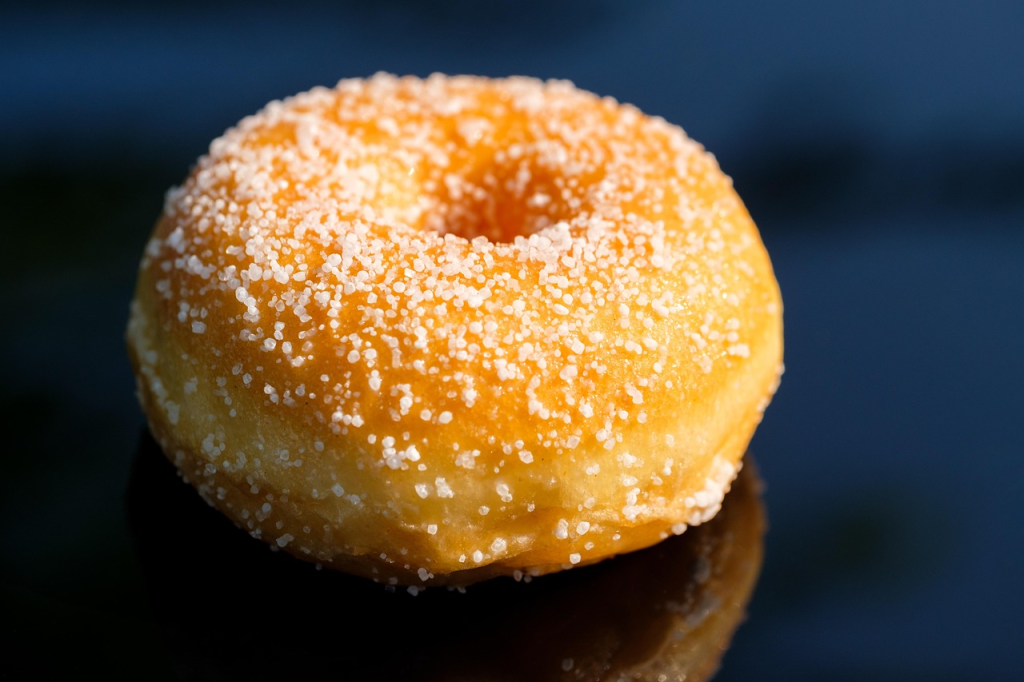That irresistible ring of fried dough, often adorned with a glistening glaze or colorful sprinkles – the donut. It’s a staple of breakfast tables, a comfort food, and a symbol of sweet indulgence. But where did this beloved treat come from? The history of the donut is surprisingly long and winding, with roots stretching back further than you might think.

Whispers of Ancient Fried Dough:
While the modern donut as we know it is a relatively recent invention, the concept of frying dough in fat has ancient origins. Archaeological evidence suggests that various cultures throughout history enjoyed some form of fried dough.
- Ancient Greece and Rome: Evidence points to the existence of “honey tokens” or “oil cakes” – dough fried in oil and then drizzled with honey. These weren’t quite the ring shape we recognize, but they share the fundamental concept.
- Medieval Europe: As culinary traditions evolved, different forms of fried dough emerged. In medieval Germany, there were “Berliner” or “Krapfen” – yeast-leavened dough fried and often filled with fruit or jam. These are still popular today and bear a closer resemblance to some modern donut varieties.
The Dutch Olykoek and the Birth of the Hole:
The most direct ancestor of the modern donut is often credited to the Dutch “olykoek” (oily cake), which arrived in North America with Dutch settlers in the 17th century. These were balls of fried dough, often filled with fruits and nuts.
However, there was a problem: the center of these olykoeks often remained uncooked. Several stories attempt to explain the origin of the hole:
- Captain Hanson Gregory’s Tale (Mid-19th Century): The most popular story attributes the hole to a young American ship captain named Hanson Gregory. Legend has it that in 1847, while sailing, Gregory grew tired of the raw center of his fried cakes. He supposedly impaled one on a spoke of his ship’s wheel, creating the now-iconic ring shape. Another version suggests his mother, Elizabeth Gregory, made the donuts for him to take on his voyages and put nuts and spices in the center where it was more likely to cook through.
- Easier Cooking: Regardless of the specific story, the practical reason for the hole is clear: it allowed the dough to cook more evenly, eliminating the doughy center.
The Rise of the “Doughnut” in America:
The term “doughnut” gained popularity in the 19th century. By the early 20th century, the spelling “donut” also emerged and became increasingly common, particularly in the United States.
- The National Doughnut Day Connection: World War I played a significant role in popularizing the donut in America. Salvation Army “Doughnut Lassies” served fried dough treats to soldiers on the front lines, providing a taste of home and a morale boost. This act of kindness led to the establishment of National Doughnut Day, still celebrated today.
- Mass Production and the Donut Shop Boom: The invention of automated donut-making machines in the 1920s revolutionized the industry, making donuts more readily available and affordable. This led to the rise of dedicated donut shops across the country.

The Modern Donut: A Global Phenomenon:
Today, the donut is a global phenomenon with countless variations and regional specialties. From the simple glazed donut to elaborate creations filled with creams, topped with candies, and infused with unique flavors, there’s a donut for every palate.
- Global Variations: Think of the French beignet, the Spanish churro, the Italian bomboloni, or the Japanese mochi donut – all delicious variations on the theme of fried dough.
- Constant Innovation: The donut world continues to evolve with new flavors, toppings, and techniques constantly emerging.
More Than Just a Treat:
The donut has become more than just a sweet indulgence. It’s a symbol of comfort, a quick pick-me-up, and a part of our cultural landscape. From its humble beginnings as simple fried dough to the iconic ring-shaped treat we know and love, the history of the donut is a testament to our enduring love for a little bit of sugary happiness.
What’s your favorite part of donut history? What’s your go-to donut flavor? Share your thoughts in the comments below!
Looking for the perfect donut shop near you to experience this delicious history firsthand? Head over to FindDonuts.com to discover local donut havens!